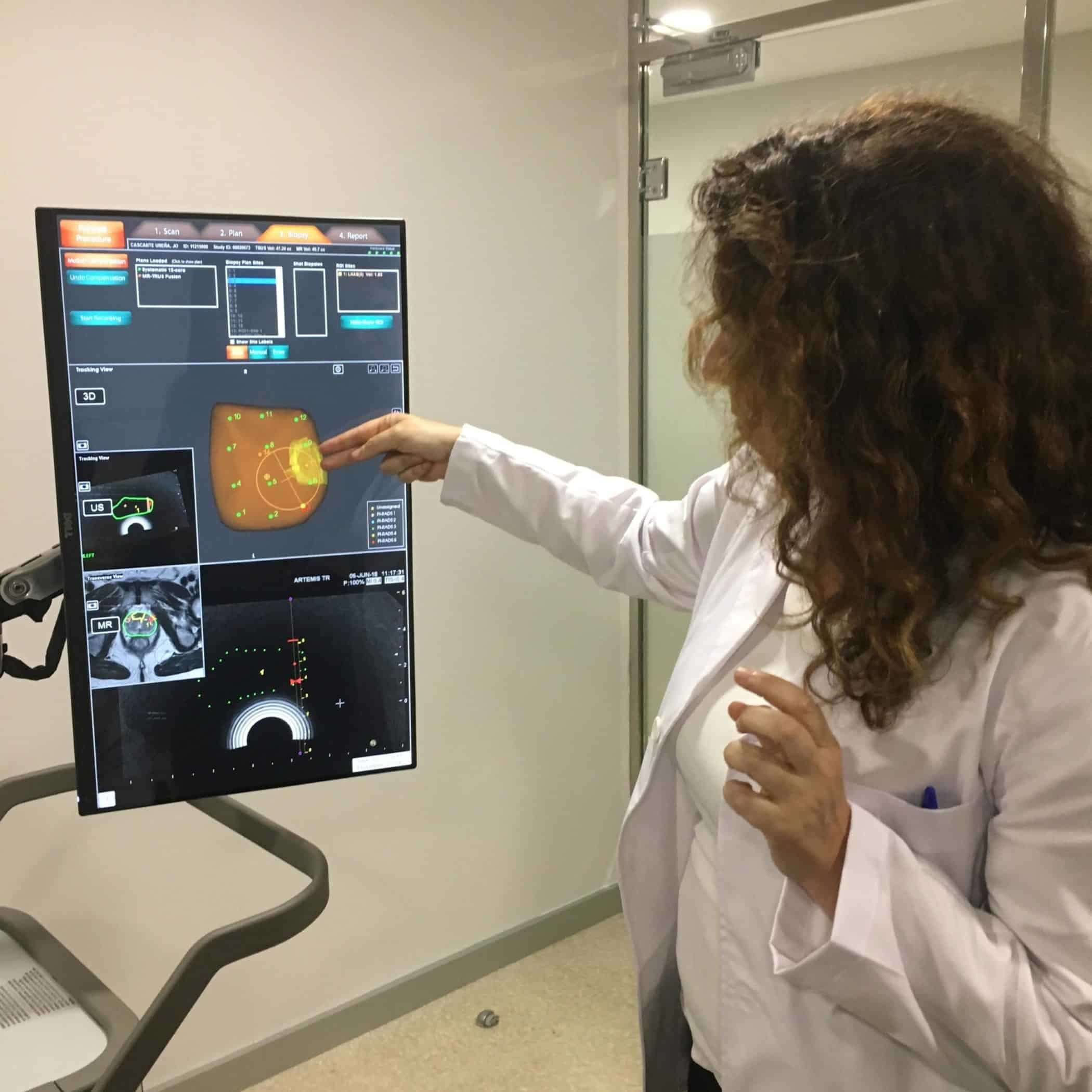After the update and start-up of Artemisa, the first and only robotic system in Spain to perform prostate biopsies by fusion, the professionals of the Uro-Radiology Unit have already published the results of the research carried out in the last year on the effectiveness of this technique in detecting prostate cancer.
This has been possible thanks to our CreuBlanca Foundation, a non-profit entity that encourages scientific research through the search for new techniques that improve the diagnosis of pathologies.
In the case of Artemis, research has not only detected a highly accurate technique for detecting tumors in the prostate, but it also has a positive effect on the quality of life of the patient.
The [Dra. Violeta Catalá] (https://creu-blanca.es/empleado-interior/299/dra-violeta-catala-sventzetzky.html), Head of the [Uro-Radiology] Unit (https: // www. creu-blanca.es/especialidades/urologia-barcelona.html) of Creu Blanca, details: “The results can occur after one year, with more than 100 prostate biopsies performed by fusion of NMR images ( prostate magnetic resonance), guided by the Robot Artemis, indicate that this is a highly effective technique for diagnosing prostate cancer.
Using the Artemis robot, we have found cancer in 89% of the biopsies performed on lesions detected by MRI and with criteria of high suspicion of malignancy. In 63% of the cases the patients had previous biopsies, performed using other techniques, which had negative results ”.
The ARTEMIS robot is made up of two parts:
- 1- A specialized ultrasound scanner that merges ultrasound images with MRIs in real time
- 2- A robotic arm that allows reaching the focus of the injury with millimeter precision.
The limitations of a “conventional” prostate biopsy
Until recently the main tools for detecting prostate cancer were digital rectal examination and a blood test with tumor markers, known as PSA.
However, this type of tests have clear limitations given that digital rectal examination is not very sensitive and omits the detection of a high percentage of tumors and the PSA value is not very specific: it can be normal in aggressive and elevated tumors in normal prostate diseases.
In the framework of conventional prostate biopsy, if after these first explorations, the urologist suspects the presence of a tumor, indicates that a biopsy is performed “blindly”, that is, without having the localized tumor. This lack of localization involves a series of problems. Since the tissue removed during the biopsy may not be from the area where the tumor is located, the percentage of false negatives for the “conventional” biopsy can be as high as 30%.
For this reason, if the suspicion of carcinoma persists (for example, due to the persistence of a high PSA), it will be necessary to repeat the biopsy, increasing the risk of infections and bleeding, as well as discomfort for the patient.
